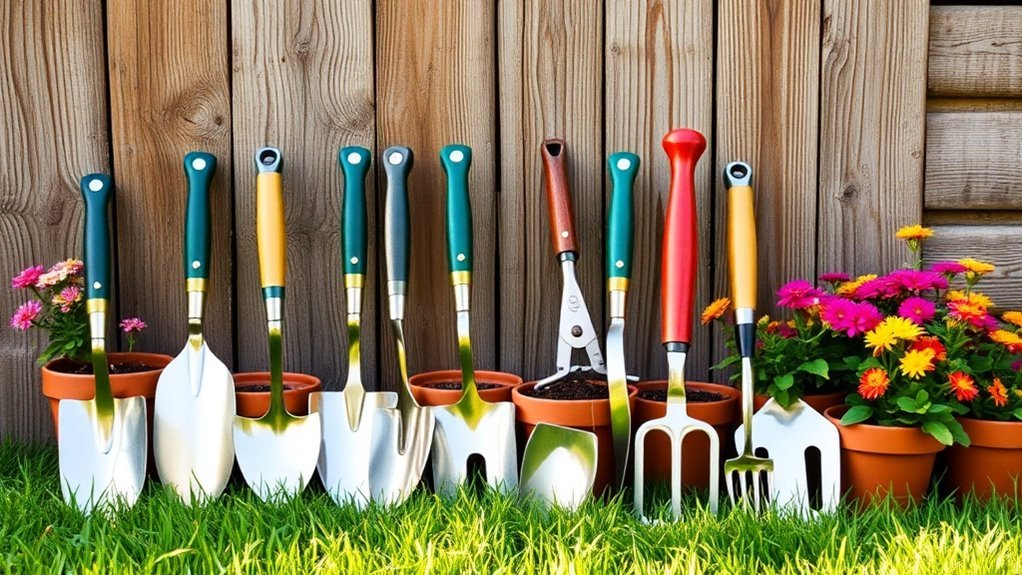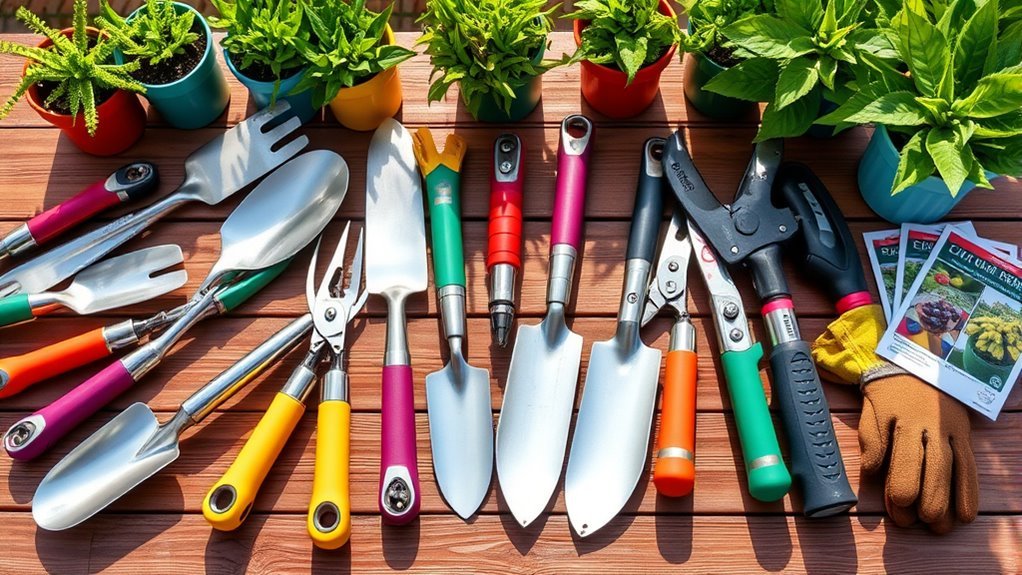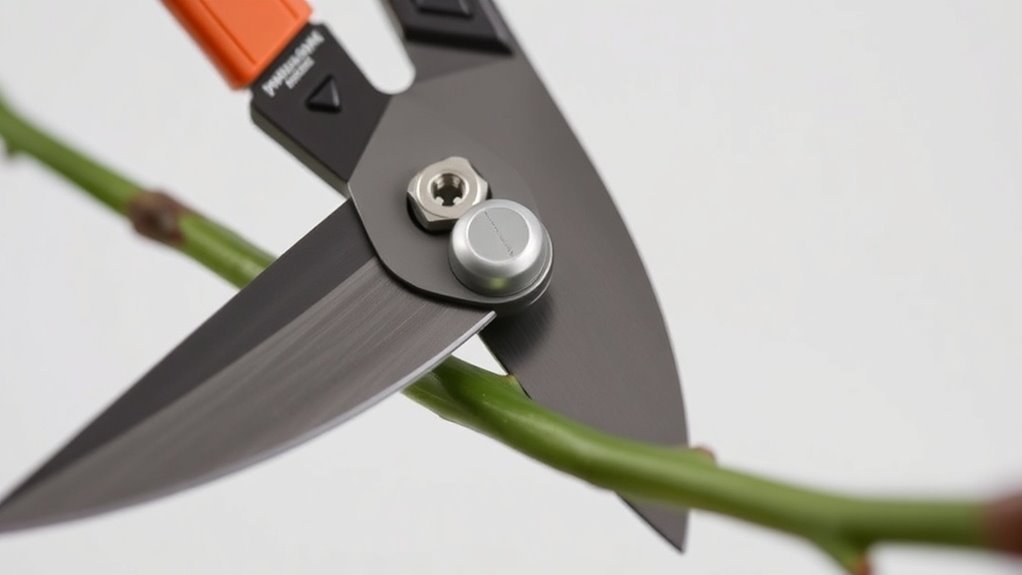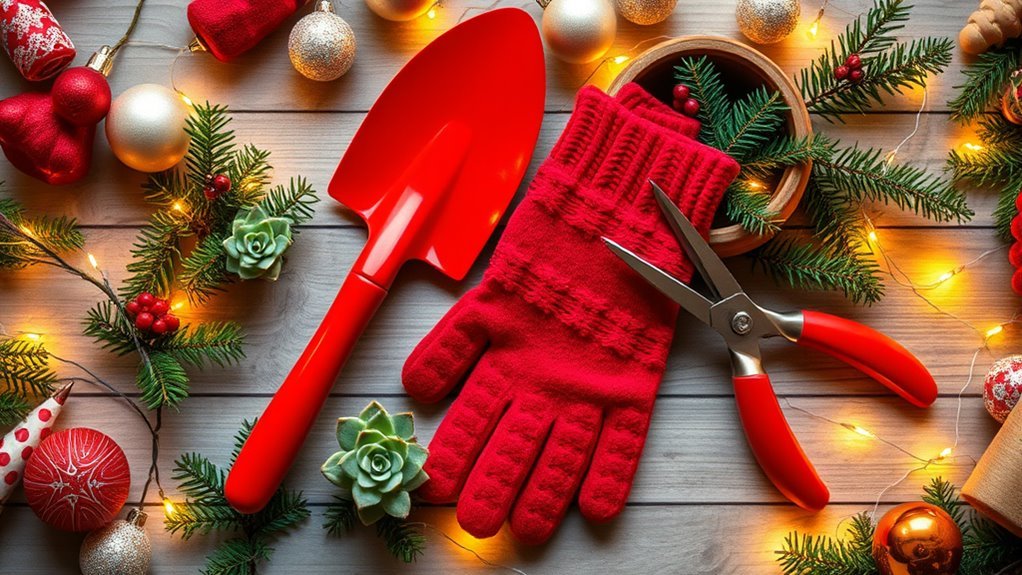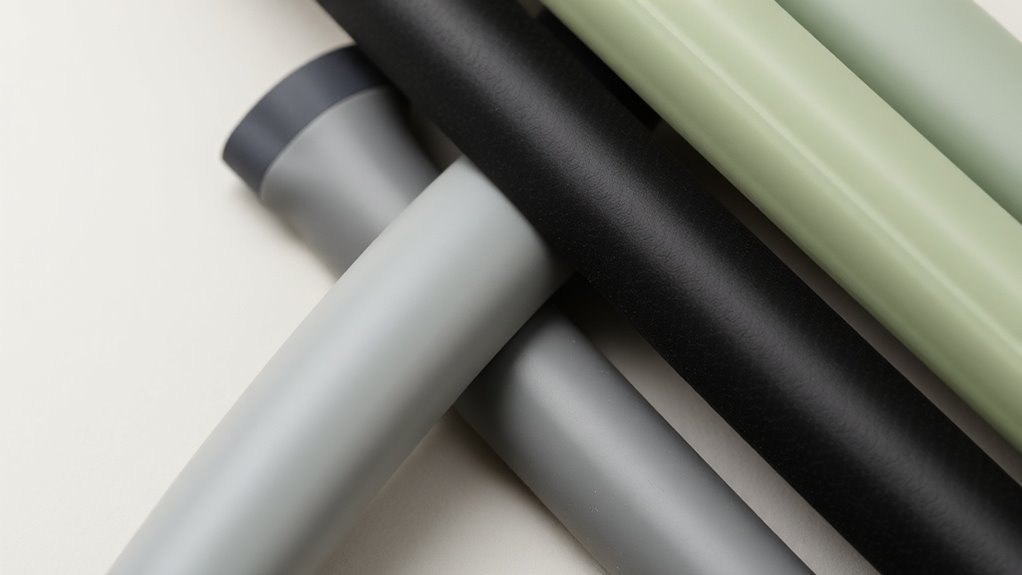The Science of Pressure in Garden Sprayers
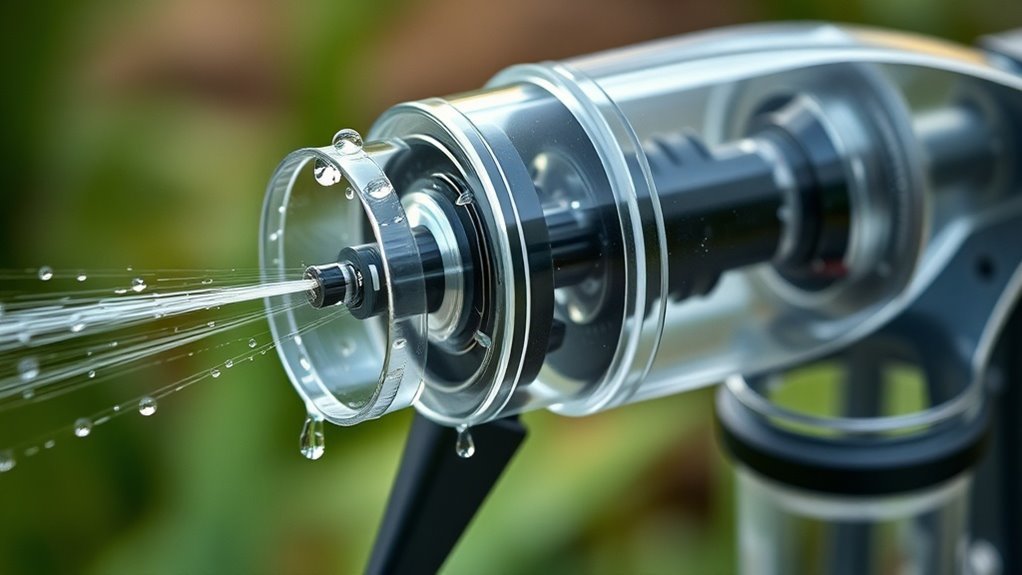
The science of pressure in garden sprayers is essential for effective application. Higher pressure creates smaller droplets, leading to better coverage and penetration. If you use low pressure, you risk leaving untreated areas, while high pressure can cause waste from overspray. Adjusting the pressure based on your sprayer’s recommendations and the task at hand is key. Knowing this can make a big difference in your gardening success. There’s much more to explore about optimizing your sprayer for different applications.
Key Takeaways
- Pressure in garden sprayers determines the force of liquid application, influencing the distribution and effectiveness of fertilizers and pesticides.
- Higher pressure produces smaller droplets, enhancing coverage and allowing better penetration through dense foliage.
- Lower pressure is ideal for gentle watering of delicate plants to prevent damage and ensure even moisture distribution.
- Proper pressure adjustment is crucial for avoiding overspray, reducing waste, and promoting healthier plant growth.
- Different spray tasks require specific pressure settings; consulting the sprayer manual ensures optimal performance and coverage.
Understanding Pressure: The Basics
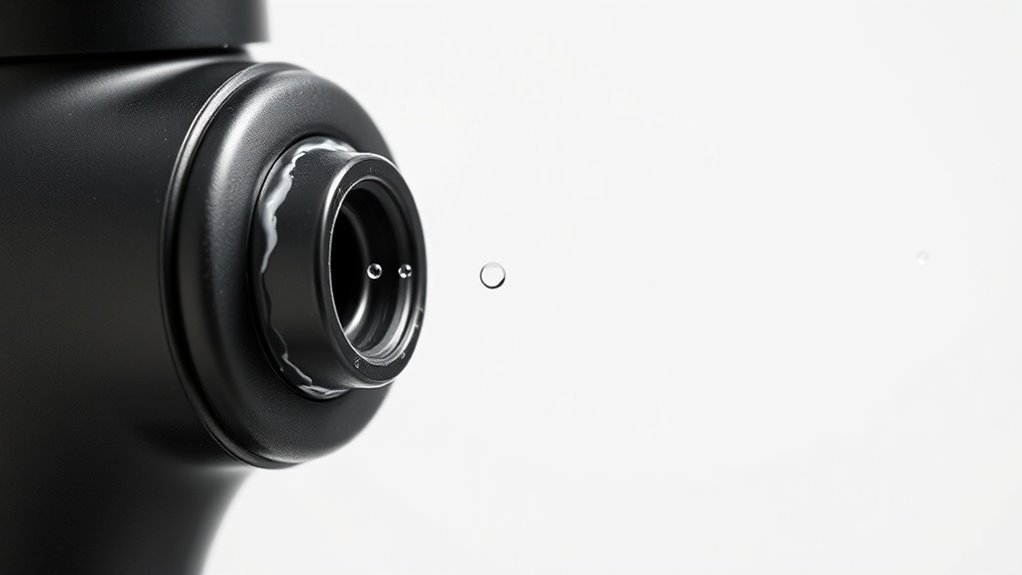
Pressure is a fundamental concept you’ll encounter in the world of garden sprayers. It refers to the force exerted by a fluid per unit area. In simple terms, the higher the pressure, the more effectively the sprayer can distribute liquids over your plants.
When you use a sprayer, air pressure helps push the liquid out of the nozzle, creating a fine mist or steady stream, depending on the design.
Understanding pressure also means recognizing how factors like nozzle size, container shape, and the type of liquid used can affect performance. Balancing these aspects is crucial for successful gardening, allowing you to optimize your spraying techniques and guarantee an even application of fertilizers or pesticides without wasting any resources.
The Importance of Pressure in Spraying
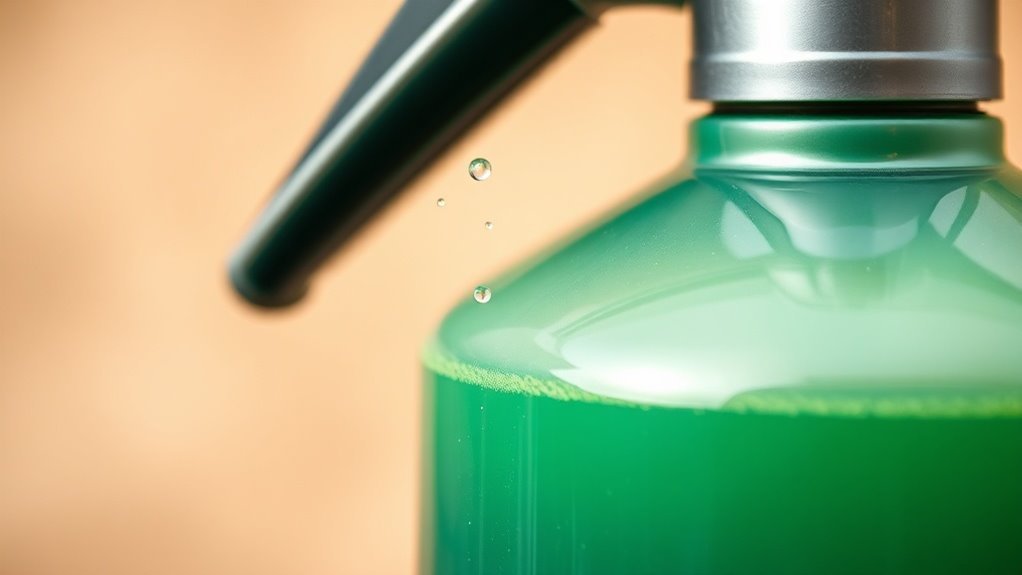
When it comes to spraying, having the right pressure makes all the difference in achieving effective coverage. If you’re using a garden sprayer, proper pressure guarantees that your solution reaches every part of the target area.
Too low pressure means inadequate distribution, leaving some areas untreated. On the flip side, too high pressure can result in overspray, wasting your materials and potentially causing harm to nearby plants or surfaces.
By adjusting the pressure to the recommended levels for your specific sprayer and application, you guarantee even coverage, increasing the effectiveness of your chemicals or fertilizers.
Ultimately, the right pressure not only saves time and resources but also promotes healthier growth in your garden or landscape. Always test and tweak for ideal results.
Effects of Pressure on Droplet Size
Understanding how pressure influences droplet size is essential for effective spraying. As you increase the pressure in your garden sprayer, the size of the droplets tends to decrease. Smaller droplets can provide better coverage and penetration, while larger droplets may result in waste or uneven application.
Here’s a simple illustration of how pressure affects droplet size:
| Pressure (PSI) | Droplet Size (Microns) |
|---|---|
| 15 | 200 |
| 30 | 150 |
| 45 | 100 |
| 60 | 75 |
| 75 | 50 |
Spray Patterns and Coverage: How Pressure Matters
While you might think that all sprayers deliver the same coverage, the reality is that pressure remarkably influences spray patterns and overall effectiveness. Higher pressure can produce a finer mist, leading to more uniform coverage over your plants. This is especially important in tight spaces or when dealing with delicate foliage.
Conversely, lower pressure often results in larger droplets, which can cause uneven application and waste potential chemicals. The distance from the nozzle also plays a role—greater pressure allows you to cover a larger area but can lead to overspray if not managed properly.
Adjusting Pressure for Different Applications
Adjusting the pressure in your garden sprayer is essential for maximizing the effectiveness of your application. Different tasks require varying pressure levels to achieve ideal results.
For instance, if you’re applying pesticides, a higher pressure might be necessary for effective penetration through dense foliage. On the other hand, when watering delicate seedlings, lower pressure is better to avoid damaging them.
To make adjustments, refer to your sprayer’s manual to find the recommended pressure settings for specific applications. Experimenting with small adjustments can help you fine-tune the pressure to your needs.
Always remember to check your nozzle type too, as some nozzles perform better at specific pressures for improved spray patterns and coverage, ensuring you get the job done right. Additionally, understanding different types of sprayers can aid in selecting the right equipment suited for your watering needs.
Maintenance Tips for Optimal Pressure Performance
Maintaining your garden sprayer is key to guaranteeing it delivers perfect pressure performance over time.
First, regularly inspect the hoses and seals for any wear or damage, as leaks can greatly affect pressure. Clean the nozzle after each use to prevent clogs; a clogged nozzle can compromise spray patterns.
Additionally, check the pressure gauge to verify it’s functioning correctly—replace it if it’s faulty. Don’t forget to lubricate moving parts with the appropriate lubricant to keep everything running smoothly.
Store your sprayer in a cool, dry place to avoid damage from extreme temperatures.
Finally, regularly check the pump assembly for signs of wear and replace any worn components to maintain ideal pressure.
Following these tips will keep your sprayer working efficiently.
Questions
Can I Use a Garden Sprayer for Different Liquids?
Yes, you can use a garden sprayer for different liquids, but make sure it’s compatible with each substance. Rinse thoroughly after each use to prevent residue build-up and guarantee effective application next time you spray.
How Often Should I Calibrate My Sprayer’s Pressure?
Oh sure, you can just wing it, but why not calibrate your sprayer every season? Trust me, you’ll appreciate the even coverage—unless you enjoy over-saturating your petunias. So, calibrate regularly for a thriving garden!
What Are Signs of Inadequate Pressure in My Sprayer?
If your sprayer’s pressure is inadequate, you’ll notice uneven coverage, droplet size difference, or reduced spray distance. You might also see more droplets settling on surfaces instead of evenly coating your plants.
Is Higher Pressure Always Better for Effective Spraying?
Higher pressure isn’t always better for effective spraying, just like a fire hose isn’t ideal for watering delicate flowers. Too much pressure can cause overspray and damage; balance is key for ideal results.
Can Environmental Factors Affect My Sprayer’s Pressure Efficiency?
Yes, environmental factors like temperature, humidity, and altitude can definitely affect your sprayer’s pressure efficiency. Warmer temperatures can increase pressure, while higher altitudes may decrease it, so keep these conditions in mind for ideal performance.
Conclusion
In your gardening journey, mastering the mechanics of pressure plays a pivotal role in perfecting performance. It’s the secret sauce for spectacular spray patterns and superior coverage. By understanding and adjusting the pressure, you can achieve amazing applications tailored to your tasks. Don’t forget, consistent care keeps your sprayer singing! So, stay savvy about pressure, and watch your garden thrive with terrific treatments. Happy spraying!

